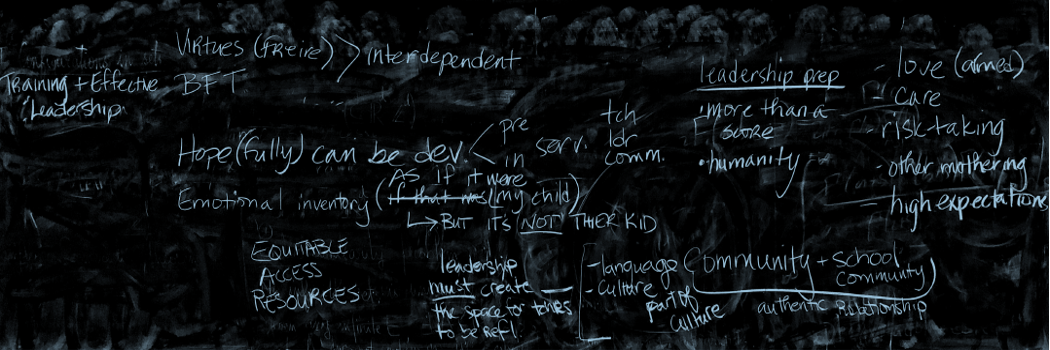To start, I just have a fun anecdote that relates to some of the things Dr. Ladson-Billings mentioned in the video. It’s not super related, so you can ignore it if you want. So when I was a kid, my family’s version of “going south” for the summer was going to Milwaukee to spend a few weeks with my granny. And we spent most of our time on the south side where all of the Black folks live. So when I was 5 or 6 I just thought that Milwaukee was an exclusively Black city. But then one day, granny brought my brother and I to the mall to see a movie (Mayfair mall, I think?). And there were only white people there! I remember looking around for literally any other Black people and there were none. I was as shook as a 6 year old can be. I remember looking up at her and asking “Granny, are we still in Milwaukee? Where did all the Black people go?” and she laughed so hard. Then she explained that Black people don’t live over there. They live in her neighborhood. And that was that. I’ve always felt like the fact that a 5 or 6 year old could notice the segregation in Milwaukee is very telling of what it’s like there. Especially considering that I am from Minneapolis, which is also hella segregated. Alright. I am done. The real response is below this.
Maybe I am just going through a bit of an afro-pessimist phase, but after this week’s readings, I am not feeling super confident in CRT in education. It was exciting to read the 1995 piece again. You can really feel how hopeful Ladson-Billings and Tate are about their contribution. It feels meaningful and powerful. It feels more critical too. it feels like this could be the thing that finally opens everyone’s eyes and fixes everything. Then you get to the Dixson and Anderson piece. Of course it’s a literature review so it can’t be THAT spicy. But it feels a bit more defeated. (Or maybe I just feel defeated. I hope I am not projecting.) It lays out big ol list of characteristics and boundaries (which is rough on the eyes, I must say). And neatly categorizes the past research into little buckets. So it almost feels like the act of laying these ideas out so neatly takes away the future possibility of it. It’s like CRT in education sold out a bit. Then we have Dr. Ladson-Billings speak at Teachers College. Which is great because she explains ideas so much more clearly than anything my mind could come up with. But even then, I did not feel any hope for future research, future changes, new theories, etc. It just felt like more bad news about Black kids in education. So I am truly wondering what the next steps are for CRT in education. Can we re-invigorate it? Should we? Should we find something else altogether? Would that new thing suffer the same fate as CRT? Or am I just being pessimistic and cynical?




Hey August,
I appreciate this take. I think Dixson and Anderson are a little concerned about the future of CRT. I think the most exciting part of a lit review is always the part it exposes — the research gap, the practical way forward, the novel implications, etc. — and Dixson and Anderson aren’t giving us a lot of that. For me, the biggest takeaway from this piece was the fact that they were calling for CRT to become more than an intellectual movement. The hopeful future might lie in applying the principles of CRT in our schooling and youth development practices.